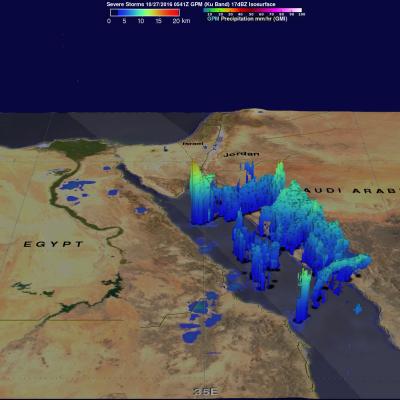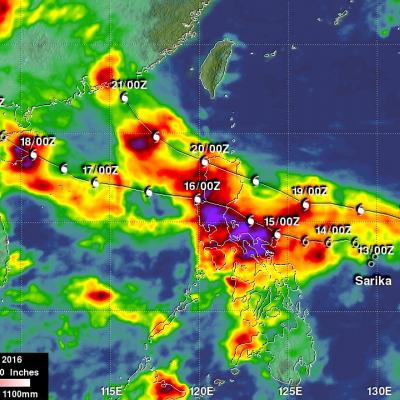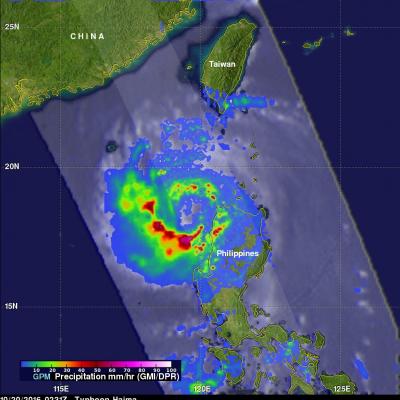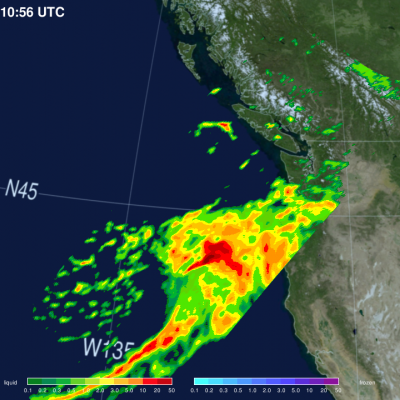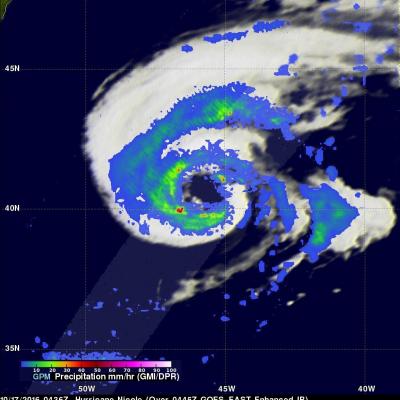Deadly Storms Hit Egypt
Last week severe storms hit Upper Egypt and areas along the Red Sea coast on October 26 and 27, 2016. Egypt normally receives relatively little rain and the heaviest rainfall usually occurs along the Mediterranean coast. Heavy rainfall from intense storms led to flooding in parts of Egypt including the Sohag and Bani Suef in Upper Egypt, the Southern Sinai and the Red Sea. At least 26 deaths and 72 injuries were attributed to the storms. The GPM core observatory satellite routinely passes above that area with a very informative pass occurring on October 27, 2016 at 0541 UTC. Data collected by


